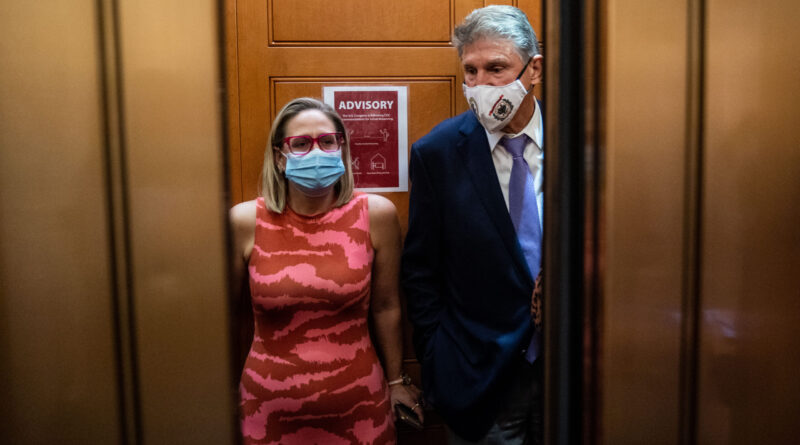Senate Democrats Stand in the way of Climate Change
President Joe Biden swept into office on the promise of aggressive climate goals, with the climate crisis ranking as a top priority for his administration. His vision for a 100% clean economy and slashing greenhouse gas emissions in America by 2050 was music to the ears of environmentalists, especially after the four preceding years. But also, he brings to the table more than 40 years of experience in getting stuff done—and in reaching across the aisle to strike a deal. That is the kind of bipartisan spirit center-right organizations such as RepublicEN have been hoping for.
While Biden scored some easy wins such as re-entering the U.S. into the Paris Climate Accord and his executive action on federal agency emissions, many activists—and especially the media—seem to peg the failure to move Build Back Better on him.
Actually, the U.S. Senate, two members in particular, are really the ones to blame.
West Virginia Senator Joe Manchin and Arizona Senator Krysten Sinema, both avowed centrists who like to reach across the aisle, should be just the kind of Democrats Biden feels comfortable working with. But the ongoing negotiations on Build Back Better, which includes $555 billion in proposed climate action, have fizzled out with their continued opposition. They constantly move the football, like Lucy in a Peanuts comic strip, proving themselves to be unreliable. Whether motivated by oil and gas donors and holdings, fiscal restraint, or love of the spotlight, Manchin and Sinema are playing roulette with our climate future. And Sinema at this point is sitting far to the right of the late Senator John McCain, a dogged advocate for climate action, despite the fact that Arizona is facing water shortages, diminishing air quality, and destructive wildfires. She does not do justice to the late maverick’s seat and does an even graver injustice to her constituents. And Machin’s home state of West Virginia, actually, is one of the states most vulnerable to climate-induced flooding. In the Mountain State, quick evacuation is no easy feat. History will not be kind to either Manchin or Sinema.
While $555 billion is a huge amount of money that doesn’t entirely make fiscal sense given the size of the federal deficit (a better way to address climate change is through a revenue-neutral, border-adjustable carbon tax) lawmakers need to consider the cost of inaction, which continues to rise. In 2021 alone, more than 20 natural disasters costing $1 billion or more plagued our country, killing almost 700 Americans.
We cannot afford to do nothing.
From the outside looking in, it appears Senate Democrats—READ: Manchin and Sinema — would rather play legislative chicken than do their job. Democrats in both chambers may enjoy their majority today, but by the time next January rolls around, they may find themselves in the minority again—and for years to come. Who has faith that even if Speaker of the House Kevin McCarthy were to bring up a series of climate bills passed by Rep. John Curtis and his Conservative Climate Caucus colleagues that those bills would see the light of day in the Senate? A Senate controlled by another coal guy, Kentucky’s Mitch McConnell. Especially two years before the Presidential election, when no Republican is going to find it in their interest to give Biden a win, even when that win would be a victory for all Americans.
For the time being, we sit at the crossroads of this climate stalemate, held hostage by two individuals who refuse to take action on climate solutions. Their obstruction may be as unstoppable as the impacts of global warming, which are sounding an alarm that we can no longer afford to snooze.
Will the U.S. wait until weather conditions become so extreme that Miami is underwater and realtors out west running ad campaigns boasting expansive land parcels for sale with ready to build conditions? These two examples may seem a bit extreme, but it’s where we are headed if Congress doesn’t get it together.
Much like the pandemic, the climate crisis is agnostic and doesn’t care which side of the aisle you sit on. In fact, with rising sea levels, by 2050, lawmakers may not have to worry about sides of the aisle because the House and Senate floors will be underwater.
Originally published on RealClear Energy.

